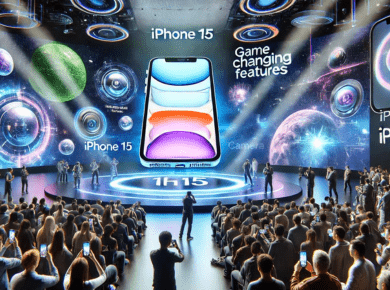Virtual Reality vs. Augmented Reality: Diving into Immersive Technologies

Virtual Reality (VR) and Augmented Reality (AR) are two transformative technologies that offer immersive experiences by altering our perception of reality. This article explores the differences between VR and AR, their applications, and the impact they have on various industries.
Virtual Reality (VR): VR creates a completely immersive digital environment that users can interact with using specialized VR headsets. It replaces the user’s real-world surroundings with a computer-generated simulation.
Augmented Reality (AR): AR overlays digital information onto the real world, enhancing our perception of reality. AR is often experienced through smartphones, tablets, or AR glasses.
Applications of Virtual Reality: VR finds applications in gaming, simulation-based training (e.g., flight simulators), architectural visualization, medical training, and virtual tourism. It provides users with a sense of presence in a digitally created world.
Applications of Augmented Reality: AR enhances real-world environments by adding digital elements. Its applications include mobile gaming (e.g., Pokémon GO), industrial maintenance and repair, interactive marketing, and medical imaging visualization.
Immersive Learning and Training: Both VR and AR have revolutionized education and training. VR offers realistic simulations for hands-on learning, while AR provides on-the-job assistance and remote expert guidance.
Entertainment and Gaming: VR gaming provides unparalleled immersion, allowing players to physically engage with virtual worlds. AR gaming blends digital and physical realities, encouraging outdoor exploration and interaction.
Healthcare and Medical Visualization: VR aids medical professionals in surgical simulations, pain management, and exposure therapy. AR assists surgeons with real-time visualization of patient data during procedures.
Architectural Design and Visualization: Both VR and AR enable architects and designers to experience and showcase their creations in immersive ways. VR provides virtual walkthroughs, while AR overlays plans onto physical spaces.
Retail and E-Commerce: AR enhances the retail experience by allowing customers to visualize products in their real-world surroundings before purchasing. This reduces uncertainty and enhances customer satisfaction.
Challenges and Future Prospects: Challenges for VR and AR include hardware limitations, content creation, and potential ethical considerations. As technology improves, these challenges are gradually being addressed.
Conclusion: Virtual Reality and Augmented Reality are reshaping the way we interact with our environment and digital content


